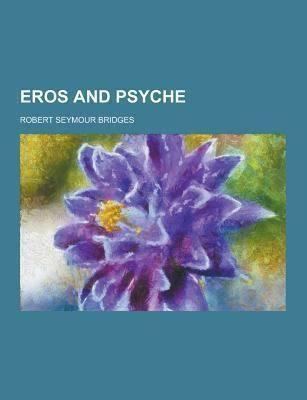Originally published 1885 | ||
 | ||
Similar Robert Bridges books, Other books | ||
Eros and Psyche is a narrative poem with strong romantic and tragic themes: first published in 1885 by Robert Bridges.
Contents
Bridges' Eros and Psyche retells the Eros (Cupid) and Psyche myth first recorded by Lucius Apuleius in his book The Golden Ass. The work received critical acclaim; Coventry Patmore expressing the opinion that Bridge's version would become the standard form of Apuleius myth.
Synopsis
As Psyche - the youngest daughter of a petty Cretan king - grows into the full flower of womanhood, she becomes worshiped by the common people as the living apotheosis of Aphrodite. Aphrodite - noting her worshipers forsaking her temples to instead ask for the princess' blessings - demands speedy vengeance. Commanding her own son (Cupid) for her purpose: Aphrodite orders him to make the Princess Psyche fall in love with some ugly, worthless vagabond. Cupid departs upon his mission.
Cupid's capriciousness - his delight in making gods and men love someone unobtainable - is amply repaid by the Fates: who now condemn him to experience the same. Arriving in Crete and seeing Psyche: Cupid himself falls helplessly in love with her, and resolves to marry her himself and protect her from his own mother's jealous ire. Cupid whisks his beloved Psyche away to a secret dwelling place - conjured into existence by his own divine powers: here Psyche can remain in safety, being protected watched and served by friendly spirits.
Structure
The poem is divided into twelve cantos - one for each of the twelve months of the year - which gives the poem a certain, almost "pastoral" feel. The number of stanzas in each canto equals the number of days in that month: so the first canto March has 31 stanzas, the second canto April has 30 stanzas, and so on. Each stanza is a septet (i.e. comprises exactly seven lines) which follow the same end-rhyming schema of a-b-a-b-c-c-b.
